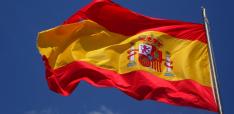Hegemony and Empire

In this column, Alfredo Toro Hardy analyzes the nature of the USA’s hegemony and its current fading process.
America’s hegemony was preceded by the British one. As generally accepted, the latter prevailed during the period comprised between the battle of Waterloo in 1815 and the end of World War I in 1918. The U.S.’ hegemony began in 1945, after WWII. The interval between 1918 and 1945 represented a sort of no man’s land, where the U.K. was too weak to impose its own hegemony, and the U.S. was reluctant to take the lead. Charles P. Kindelberger argued that this vacuum created the conditions for the 1929 economic crisis to transform itself into a long and painful economic depression. (Kindelberger, 1973).
Hegemony and empire, of course, do not represent the same thing. While British hegemony began in 1815, the so called “First British Empire” can be dated back to a century earlier. Conversely, the U.K.’s empire was to survive for several decades after the end of its hegemonic period. Moreover, during the so called “Pax Britannica” - synonym of its hegemony - several other empires shared the international scene with the British one. Among the latter, the Russian, the Ottoman, the French or the Austro-Hungarian. However, thanks to a group of actions, rules and mechanisms, the United Kingdom was able to impose its hegemonic footprint worldwide.
The Royal Navy was able to guarantee safe transit through the oceans. British steam ships revolutionized maritime transport, significantly shortening distances. British submerged cables crossed and interconnected the most diverse latitudes. Thanks to this transoceanic telegraph network, British news agencies were able to project Anglocentric content to newspapers around the world. The fixed parity between gold and the sterling pound was responsible for preserving international monetary stability. Economic liberalism, which bore a clear British imprint, defined the rules of world trade. British management and accounting practices became universal, while its financial and infrastructural investments projected British economic might worldwide. Under British stewardship the first group of international institutions emerged. The British concept of civilized life transformed itself into a sort of soft power copied by international elites. And so on and so forward. No other empire of its time was able to homogenize the world to such an extent.
America’s empire also preceded its hegemony for many decades. According to Gore Vidal its empire dates back to its war with Spain in 1898, when the U.S. acquired that country’s remaining colonies and began acting unashamedly as an imperial power. (Vidal, 1987). However, when between 1846-1848 the United States waged war with a much weaker neighbor, Mexico, with the intention of annexing half of its territory, it clearly behaved as an imperial power. It was only after 1945, though, when its hegemonic standing began to take shape through the creation of a wide web of international institutions, systems of alliances, and a rules-based international order. Among them, the International Monetary Fund, the World Bank (initially International Bank for Reconstruction and Development), the International Trade Organization (promptly succeeded by the General Agreement on Trade and Tariffs), the Marshall Plan, the North Atlantic Treaty Organization, the Inter American Treaty of Reciprocal Assistance, the ANZUS Treaty, the Organization of American States, the South Asia Treaty Organization, the Interamerican Development Bank, and the Organization for Economic Co-operation and Development. And so on. Through this network, the U.S.’ liberal internationalist grand vision translated into a potent hegemonic system.
The distinction between empire and hegemony is thus directly linked to the acceptance by the international community of a position of undisputed leadership. Both notions, of course, involve a position of power. However, according to the classical definition by Antonio Gramsci the essence of hegemony entails the capacity to define the terms of a shared agenda. This, by its own nature, implies recognition by others to a given position of leadership (Fogacs, 2001).
According to Andrew Gamble: “The second perspective draws on the understanding of hegemony associated with Gramsci. The exercise of power entails the use of both coercion and consent, and the most stable policies are those where consent is prominent. The focus is (…) on the way in which power is accepted as legitimate through ideological and cultural persuasion. The emphasis is on how a particular conception of world order is created and sustained through a myriad of agencies and organizations, and the incorporation of many different interests into an overreaching political project. The ideological aspect of hegemony is what is most significant about it” (Gamble, 2002, p. 130).
The notion of empire as a means of international power is much simpler. Indeed, it does not require consent. Raw force suffices. However, many empires sought to present a conceptual justification for their dominion. The British called it the “white man’s burden”, the French their “civilizing mission”, while Japan referred to the “Greater East Asia Co-prosperity Sphere”. France even coined the concept of “Latin America” to account for its conquest of Mexico, during Napoleon III’s reign. In the end, though, what mattered was the efficiency shown in imposing their undisputed will upon others.
As shown by the example of the British empire, though, efficiently imposing imperial will did not require of overwhelming force. To the contrary, the hundreds of millions of Indians in times of the Raj, where controlled by a British civil service that at it most didn’t exceed 1,000 people. The key to this was the indirect rule represented by the cooptation of local elites. Thomas Babington Maculay, one of the main architects of the Indian colonial policy, defined it in 1835 in the following terms: “We must do our best to form a class who may be interpreters between us and the millions whom we govern; a class of persons, Indian in blood and colour, but English in taste, in opinions, in morals and in intellect” (Fergusson, 2003, p. 190).
It is clear that after 1945 the United States became a hegemonic power, what could be debated is if it also continued to be an imperial one. Niall Ferguson, Richard Hass and Victor Bullmer-Thomas are among those who believe that it did so. For Ferguson, the U.S. has never ceased to be an empire, although one reluctant to recognize itself as such. Hass argued about the nature of America’s “informal empire”, whereas Bulmer-Thomas referred to a “semiglobal empire”. Although with different nuances, the three of them agreed on the imperial character of America’s foreign policy. (Ferguson, 2004, p. 2; Bacevich, 2002, p. 219; Bulmer-Thomas, 2018, Preface).
While in the old British empire the Union Jack waved proudly, the stars and stripes did not swing in countries under American dominance. However, and very particularly during the Cold War, that didn’t preclude the prevailing imperial nature of its sphere of control. This was clearly exemplified by regimes such as those of Trujillo (Dominican Republic), Somoza (Nicaragua), Batista (Cuba), Marcos (The Philippines), Suharto (Indonesia) or Reza Pahlevi (Iran). Conversely, Arbenz (Guatemala), Lumumba (Congo), Mossadegh (Iran), Allende (Chile), Bishop (Grenada) or Noriega (Panama), among many others, were a vivid representation of the costs involved in defying such dominance. America’s indirect rule was based, as in Maculay’s prescription, in the coopting of local elites, particularly the military one, as well as in the CIA’s expedite hand. (Ferguson, 2003, p. 190).
As Clyde Prestowitz puts it: “If it looks, walks, and quacks like a duck, chances are it’s a duck. Of course, America has few direct colonies or territorial possessions in the classic manner of the Britain and Japan of the past. But empires are also measured by their ability to project power, to compel or entice others to do their bidding”. (Prestowitz, 2003, pp. 25-26).
It could be argued, hence, that during the Cold War the U.S. was at the same time a hegemonic and an imperial power. In relation to developed nations, as those affiliated to the OECD, and to Israel, it acted solely as a hegemonic one. Therein, consent around the legitimacy of its leadership was crystal clear. Contrarywise, in the large grounds of the then so-called Third World, where Soviet penetration was always a risk, constant reminders and periodical enforcement of America’s compelling power became the norm. In that sphere, the unmistakable visage of the duck was never absent.
With the end of Cold War, it seemed that the U.S.’ imperial power had become reluctant. Practically, the whole international community converged around America’s rules-based order, amid a generalized consensus on the legitimacy of its leadership. The United States, indeed, had attained a stage where its supremacy was overwhelmingly accepted as both benign and legitimate.
Incomprehensively under the light of common sense, George W. Bush’s administration turned upside down the country’s hegemonic standing, precisely at the point when it had reached its pinnacle. Proclaiming the futility of cooperative multilateralism, which from its perspective just constrained America’s power, its administration asserted that the country’s national security took precedence over international law. Calling themselves “democratic imperialists”, Bush’s neoconservatives unashamedly asserted the imperial nature of their actions.
Although Donald Trump’s foreign policy could not be labelled as imperialistic, it also rejected multilateral cooperation. Preferring a bilateral approach where the country could exert its full power in a direct way, it tended to bully others into compliance. By stripping the international system of its ordering arrangements, Trump aimed at a “dog eat dog” environment, where the U.S. could come up as the top dog. On top, his transactional approach to foreign policy subordinated alliances to money. As a result, his administration also hampered in a significant way America’s hegemonic standing. It not only weakened the institutional architecture that supported it, but sowed a deep mistrust amid the country’s allies.
Both Barak Obama and Joe Biden converged in strengthening the international structure that supported America’s hegemony, searching to repair the fractures imposed upon it by their predecessors. At this point in time, and notwithstanding Biden’s forceful and effective reconstruction of America’s system of alliances, the U.S.’ hegemonic standing remains extremely fragile. This is essentially for three reasons:
First, because of the profound lack of trust towards a nation where Trump could once again return to the White House, trashing in his way allies and international organizations, and bringing with him a brand of MAGA isolationism. Second, because of the rivalry of a powerful revisionist axis (China, Russia, Iran, North Korea) that aims at sweeping away the rules-based international order, created by the U.S. after WWII, which represents the basis of its hegemony. Third, because the kind of generalized coalescence around America’s leadership that succeeded the end of the Cold War could never be attained today, when most of the countries of the Global South emphasize their autonomy of action.
In sum, the time of U.S.’ hegemony is rapidly fading away.
Alfredo Toro Hardy, PhD, is a retired Venezuelan career diplomat, scholar and author. Former Ambassador to the U.S., U.K., Spain, Brazil, Ireland, Chile and Singapore. Author or co-author of thirty-six books on international affairs. Former Fulbright Scholar and Visiting Professor at Princeton and Brasilia universities. He is an Honorary Fellow of the Geneva School of Diplomacy and International Relations and a member of the Review Panel of the Rockefeller Foundation Bellagio Center.
Photo by Marta Wave
References
Bacevich, Andrew J. (2002). American Empire. Cambridge, Mass.: Harvard University Press.
Bulmer-Thomas, Victor (2018). Empire in Retreat: The Past, Present and Future of the United States. New Haven: Yale University Press.
Fergusson, Niall (2003). Empire: How Britain Made the Modern World. London: Penguin Books.
Fergusson, Niall (2004). Colossus: The Rise and Fall of the American Empire. London: Allen Lane.
Fogacs, David (2001). Antonio Gramsci Readership. London: Lawrence & Wishart.
Gamble, Andrew (2002). “Hegemony and Decline: Britain and the United States” in Patrick Karl O’Brien and Armand Clesse, Editors, Two Hegemonies. Burlington: Ashgate Publishing Company.
Kindelberger, Charles P. (1973). The World in Depression, 1929-1939. Berkeley: Berkeley University Press.
Prestowitz, Clyde (2003). Rogue Nation. New York: Basic Books.
Vidal, Gore (1987). Empire. New York: Random House.


